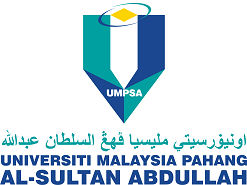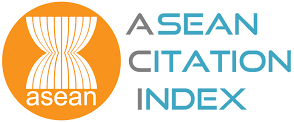Electro-discharge machining of alumina: Investigation of material removal rate and surface roughness
DOI:
https://doi.org/10.15282/jmes.11.4.2017.5.0271Keywords:
Electro-discharge machining; non-conductive ceramic; assisting electrode; response surface methodology; material removal rate; surface roughness.Abstract
Alumina is a non-conductive ceramic material which can meet the high demand of industrial applications due to its excellent physical and chemical properties. However, machining of alumina is not possible by using the conventional machining methods due to its inherent brittleness. Recently, electro-discharge machining has been used for structuring alumina with assisting electrode to initiate the spark between the conductive tool electrode and the non-conductive work piece material. However, the effects of process parameters on material removal rate and surface roughness have not been investigated to formulate mathematical models. This study dealt with developing models for material removal rate and surface roughness correlating three process parameters which are peak current, pulse-on time and gap voltage using response surface methodology. The models were verified with 7% error between the results of empirical models and the experimental values.
References
Schubert A, Zeidler H, Kühn R, Hackert-Oschätzchen M. Microelectrical discharge machining: A suitable process for machining ceramics. Journal of Ceramics. 2015;2015:1-9.
Banu A, Abu Bakar M, Ali MY, Adesta EYT. Analysis of WEDM Process parameters on surface roughness and kerf using Taguchi method. International Journal of Engineering Materials and Manufacture. 2017;2.
Patel KM, Pandey PM, Rao PV. Determination of an optimum parametric combination using a surface roughness prediction model for EDM of Al2O3/SiCw/TiC ceramic composite. Materials and Manufacturing Processes. 2009;24:675-82.
Liu YH, Ji RJ, Li XP, Yu LL, Zhang HF. Electric discharge milling of insulating ceramics. Proceedings of the Institution of Mechanical Engineers, Part B: Journal of Engineering Manufacture. 2008;222:361-6.
Ji R, Liu Y, Zhang Y, Wang F, Cai B, Fu X. Single discharge machining insulating Al2O3 ceramic with high instantaneous pulse energy in kerosene. Materials and Manufacturing Processes. 2012;27:676-82.
Muttamara A, Fukuzawa Y, Mohri N, Tani T. Effect of electrode material on electrical discharge machining of alumina. Journal of Materials Processing Technology. 2009;209:2545-52.
Banu A, Ali MY, Rahman MA. Micro-electro discharge machining of non-conductive zirconia ceramic: investigation of MRR and recast layer hardness. The International Journal of Advanced Manufacturing Technology. 2014;75:257-67.
Mohri N, Fukuzawa Y, Tani T, Sata T. Some Considerations to Machining Characteristics of Insulating Ceramics-Towards Practical Use in Industry. CIRP Annals. 2002;51:161-4.
Banu A, Ali MY. Electrical discharge machining (EDM): a review. Int J Engineering Materials Manufacture. 2016;1:3-10.
Ndaliman MB, Khan AA, Ali MY. Influence of electrical discharge machining process parameters on surface micro-hardness of titanium alloy. Proceedings of the Institution of Mechanical Engineers, Part B: Journal of Engineering Manufacture. 2013;227:460-4.
Chiang K-T. Modeling and analysis of the effects of machining parameters on the performance characteristics in the EDM process of Al2O3+TiC mixed ceramic. The International Journal of Advanced Manufacturing Technology. 2007;37:523-33.
Liu YH, Li XP, Ji RJ, Yu LL, Zhang HF, Li QY. Effect of technological parameter on the process performance for electric discharge milling of insulating Al2O3 ceramic. Journal of Materials Processing Technology. 2008;208:245-50.
Fukuzawa Y, Mohri N, Tani T, Muttamara A. Electrical discharge machining properties of noble crystals. Journal of Materials Processing Technology. 2004;149:393-7.
Kucukturk G, Cogun C. A new method for machining of electrically nonconductive workpieces using electric discharge machining technique. Machining Science and Technology. 2010;14:189-207.
Kansal H, Singh S, Kumar P. Application of Taguchi method for optimisation of powder mixed electrical discharge machining. International Journal of Manufacturing Technology and Management. 2005;7:329-41.
Kansal HK, Singh S, Kumar P. Parametric optimization of powder mixed electrical discharge machining by response surface methodology. Journal of Materials Processing Technology. 2005;169:427-36.
Habib SS. Study of the parameters in electrical discharge machining through response surface methodology approach. Applied Mathematical Modelling. 2009;33:4397-407.
Müller F, Monaghan J. Non-conventional machining of particle reinforced metal matrix composite. International Journal of Machine Tools and Manufacture. 2000;40:1351-66.
Banerjee S, Mahapatro D, Dubey S. Some study on electrical discharge machining of ({WC+TiC+TaC/NbC}–Co) cemented carbide. The International Journal of Advanced Manufacturing Technology. 2008;43:1177-88.
Assarzadeh S, Ghoreishi M. A dual response surface-desirability approach to process modeling and optimization of Al2O3 powder-mixed electrical discharge machining (PMEDM) parameters. The International Journal of Advanced Manufacturing Technology. 2012;64:1459-77.
Singh J, Singh S, Singh G. Study of surface roughness for discontinuous ultrasonic vibration assisted electric discharge machining using RSM. International Journal of Engineering Research and Technology. 2013;2:727-37.
Whitcomb PJ, Anderson MJ. RSM simplified: optimizing processes using response surface methods for design of experiments: CRC press; 2004.
Tsai K-M, Wang P-J. Semi-empirical model of surface finish on electrical discharge machining. International Journal of Machine Tools and Manufacture. 2001;41:1455-77.
Wang P-J, Tsai K-M. Semi-empirical model on work removal and tool wear in electrical discharge machining. Journal of Materials Processing Technology. 2001;114:1-17.
Downloads
Published
Issue
Section
License
Copyright (c) 2017 The Author(s)

This work is licensed under a Creative Commons Attribution 4.0 International License.





